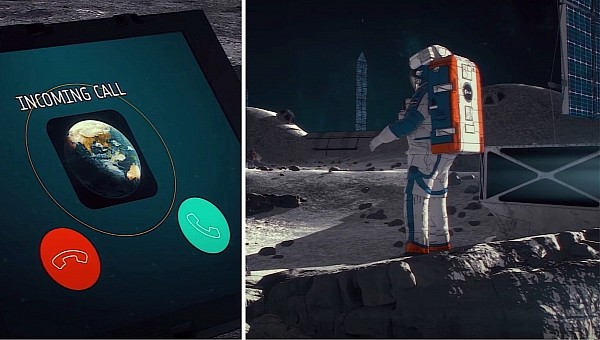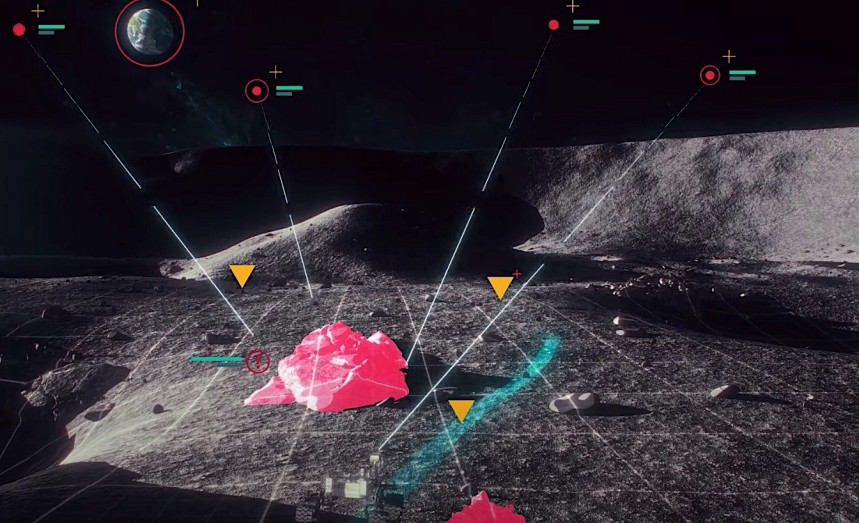Back in October 2022, we learned of the European Space Agency’s (ESA) plans to create a network of satellites around the Moon. The project is called Moonlight, and this week we’ve received word it’s taking yet another step toward becoming a reality.
As most of you must be aware by now, the Moon is about to get pretty crowded over the next ten years. A group called Northern Sky Research dug up all upcoming missions from around the world and came up with a staggering number: 250 of them target the Moon over the next decade. That’s good news for space companies, as the same group estimates this nascent lunar economy will be worth $105 billion, but bad news for those planning to operate rovers and coordinate missions.
Why so? It’s pretty simple, really: at the time of writing, there’s little in the way of a communication network up there, and even less so in the way of a satellite-based navigation system. And they’re both desperately needed.
ESA kickstarted the Moonlight program with the goal of solving those issues, and last year was at the receiving end of ideas and solutions coming from potential partners. That stage ended some months ago, and this week the agency announced it “issued an invitation to tender for the work” to European and Canadian partners. That means companies now have the chance to submit their offers for supply and services, and no less than 100 of them (unnamed at this point, sadly), seem to be interested.
As per the details of the program, the goal is to establish a constellation of tools around our planet’s natural satellite to aid with communications and navigation. Although when created it will be primarily used by ESA and its partner agencies to conduct their work up there, the network will be open to being shared for commercial purposes as well.
What does that mean, in words we can all understand? Just expect Moon exploration efforts to happen from now on in high-definition, as the Moon’s own comms network would allow not only faster streaming of video, but also a much better image quality.
The volume of data sent over by the hardware in place on the Moon will rise as well (at the moment it’s impossible to say by how much), and so will the speed of transfer for said data. And all of that will undoubtedly help us unlock the mysteries of our closest celestial companion faster.
As a side effect, the network could probably make possible direct calls to astronauts on the Moon, "using your roaming data allowance," as per ESA.
As for navigation, just imagine what a lunar satellite network will do not only for remotely-controlled or autonomous rovers, but for the humans that will eventually work and live there.
ESA does not say when it will decide on this or that idea, but given how it keeps referencing the upcoming Moon missions over the next ten years, we’ll probably have the first lunar comms satellite up and running pretty soon.
Why so? It’s pretty simple, really: at the time of writing, there’s little in the way of a communication network up there, and even less so in the way of a satellite-based navigation system. And they’re both desperately needed.
ESA kickstarted the Moonlight program with the goal of solving those issues, and last year was at the receiving end of ideas and solutions coming from potential partners. That stage ended some months ago, and this week the agency announced it “issued an invitation to tender for the work” to European and Canadian partners. That means companies now have the chance to submit their offers for supply and services, and no less than 100 of them (unnamed at this point, sadly), seem to be interested.
As per the details of the program, the goal is to establish a constellation of tools around our planet’s natural satellite to aid with communications and navigation. Although when created it will be primarily used by ESA and its partner agencies to conduct their work up there, the network will be open to being shared for commercial purposes as well.
The volume of data sent over by the hardware in place on the Moon will rise as well (at the moment it’s impossible to say by how much), and so will the speed of transfer for said data. And all of that will undoubtedly help us unlock the mysteries of our closest celestial companion faster.
As a side effect, the network could probably make possible direct calls to astronauts on the Moon, "using your roaming data allowance," as per ESA.
As for navigation, just imagine what a lunar satellite network will do not only for remotely-controlled or autonomous rovers, but for the humans that will eventually work and live there.
ESA does not say when it will decide on this or that idea, but given how it keeps referencing the upcoming Moon missions over the next ten years, we’ll probably have the first lunar comms satellite up and running pretty soon.














